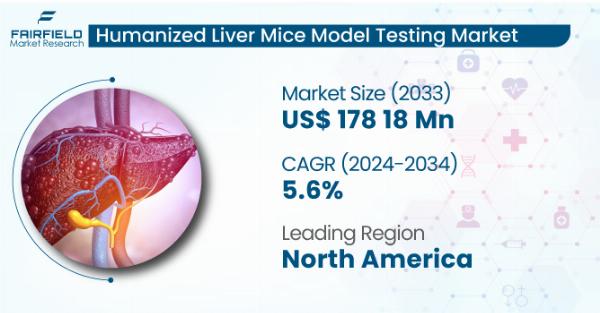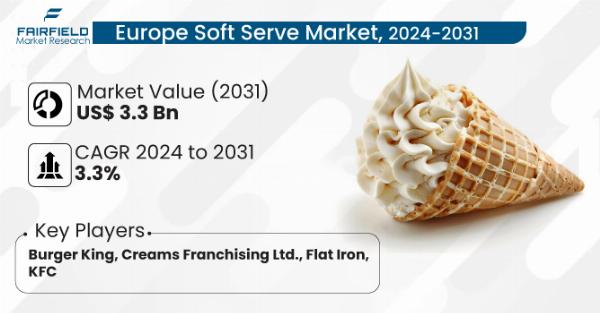 Smart Link Building – DA 50+ Backlinks with Fast Indexing!
Smart Link Building – DA 50+ Backlinks with Fast Indexing!
Medical Tubing Market to Reach $10.32 Billion by 2030
Written by Neha Patil » Updated on: June 17th, 2025

The global medical tubing market is projected to reach a valuation of US$10.32 billion by 2030, up from US$5.2 billion recorded in 2022, expanding at a compound annual growth rate (CAGR) of 10.3% during the forecast period from 2023 to 2030.
Visit our Research Report:https://www.fairfieldmarketresearch.com/report/medical-tubing-market
Key Trends Driving Market Growth
Rising Demand for Personalized Medicine: The increasing focus on personalized medicine is expected to drive the growth of the medical tubing market. Precision medical methods, including gene therapy, cell-based therapeutics, and targeted medication delivery, rely on medical tubing for accurate and safe delivery.
Focus on Environmental Sustainability: The medical tubing market is witnessing a shift towards sustainable material choices. Manufacturers are increasingly using recyclable and biodegradable materials, supporting environmental goals and reducing carbon emissions.
Healthcare Cost Management Initiatives: These initiatives may affect medical device reimbursement rates and reduce the demand for high-end medical tubing products.
Dominance of Plastics Category: In 2022, the plastics category led the industry, with high-performance polytetrafluoroethylene (PTFE) being valued for its lubricity and chemical resistance, essential for specialized medical tubing such as catheters and guide wires.
Growth of Multi-lumen Tubing: The multi-lumen category dominated the industry in 2022. Materials like silicone, polyurethane, and thermoplastic elastomers (TPEs) used in multi-lumen tubing are biocompatible and compatible with the contents being delivered.
Rapid Expansion of Catheters & Cannulas: This category is expected to experience the fastest growth within the forecast period. Sterilization techniques, including autoclaving, EtO sterilization, and gamma radiation, are essential to ensure patient safety.
North American Market Dominance: North America is anticipated to dominate the medical tubing market due to the rising demand for minimally invasive surgical techniques and advanced tubing solutions required for instruments like endoscopes, catheters, and laparoscopic equipment.
Fastest Growth in Asia Pacific: The Asia Pacific region is expected to be the fastest-growing market due to the increasing prevalence of chronic diseases and the rising demand for healthcare services and minimally invasive surgeries.
Key Growth Determinants
Increasing Burden of Chronic Diseases and Expanding Aging Population: Chronic conditions like diabetes, heart disease, and respiratory issues require long-term management and therapy, driving the demand for medical tubing. The aging population is more susceptible to health problems, necessitating the use of medical procedures and equipment that rely on medical tubing.
Rising Demand for Minimally Invasive Medical Procedures: Medical tubing is crucial for minimally invasive procedures, including endoscopy, laparoscopy, and arthroscopy. The growing adoption of robotic surgical equipment also drives the demand for high-quality, flexible, and durable medical tubing.
Increasing Demand for Disposable Tube-based Medical Devices: Disposable medical devices are preferred due to their lower risk of transmitting healthcare-associated infections (HAIs) and the absence of sterilization and maintenance costs, driving the demand for disposable medical tubing.
Major Growth Barriers
High Manufacturing Costs: The high cost of manufacturing medical tubing products can hinder market growth. These costs may discourage healthcare facilities and providers, particularly those operating in budget-conscious environments, from investing in high-end medical tubing.
Stringent Regulatory Requirements: Meeting stringent regulatory requirements demands significant research, testing, and quality control expenditures. The time required for regulatory approval can delay the launch of new products, affecting market dynamics.
Key Trends and Opportunities
Growing Demand for Biocompatible Tubing Materials: Biocompatible materials are essential for maintaining patient safety when medical tubing is in contact with bodily fluids, tissues, or organs. These materials are crucial for biomedical devices such as catheters, stents, and vascular grafts.
Rising Interest in Smart Tubing: The incorporation of sensors and monitoring technology in smart tubing allows for real-time monitoring of critical factors such as pressure, flow rate, temperature, and drug dosage, improving patient outcomes and safety.
Increasing Use of 3D Printing: 3D printing enables the customization of medical tubing products to meet specific patient needs, reducing development costs and time. Advanced materials used in 3D printing expand the applications for medical tubing.
Regional Frontrunners
North America: The advanced healthcare infrastructure in North America, supported by government regulations and increasing healthcare spending, underpins its dominance in the medical tubing market. The region's medical facilities require a constant supply of medical tubing for various uses.
Asia Pacific: The rapid expansion of healthcare facilities and services, driven by government initiatives, rising healthcare awareness, and an increasing geriatric population, positions Asia Pacific as the fastest-growing medical tubing market region.
Competitive Landscape
The global medical tubing market is consolidated, with a few well-known names leading the industry. Major players are launching new products and modernizing their distribution systems to expand globally. Fairfield Market Research anticipates more consolidation in the coming years.
Key Players in the Global Medical Tubing Market:
Saint-Gobain
Freudenberg Medical LLC.
L. Gore and Associates Inc.
Avient Corporation
Raumedic AG
Lubrizol Corporation
Elkem ASA
Dow Corning Corporation
Nordson Corporation
Teknor Apex
Optinova
Asahi Tec Corp.
ZARYS International Group
NewAge Industries, Inc.
Spectrum Plastics Group
Market Segmentation
By Material:
Plastics (e.g., PVC, PE, PP, PTFE, PEEK, PFA, PC)
Rubbers (e.g., TPE, TPU, silicone, PU, EPDM, latex)
Specialty Polymers (e.g., bioabsorbable polymer, EVA)
By Structure:
Single-lumen
Co-extruded
Multi-lumen
Tapered or bump tubing
Braided tubing
By Application:
Bulk disposable tubing
Catheters & cannulas
Drug delivery system
Special applications
By Geographic Coverage:
North America (U.S., Canada)
Europe (Germany, U.K., France, Italy, Turkey, Russia, Rest of Europe)
Asia Pacific (China, Japan, South Korea, India, Southeast Asia, Rest of Asia Pacific)
Latin America (Brazil, Mexico, Argentina, Rest of Latin America)
Middle East & Africa (GCC, South Africa, Egypt, Nigeria, Rest of Middle East & Africa)
Note: IndiBlogHub features both user-submitted and editorial content. We do not verify third-party contributions. Read our Disclaimer and Privacy Policyfor details.
Copyright © 2019-2025 IndiBlogHub.com. All rights reserved. Hosted on DigitalOcean for fast, reliable performance.














